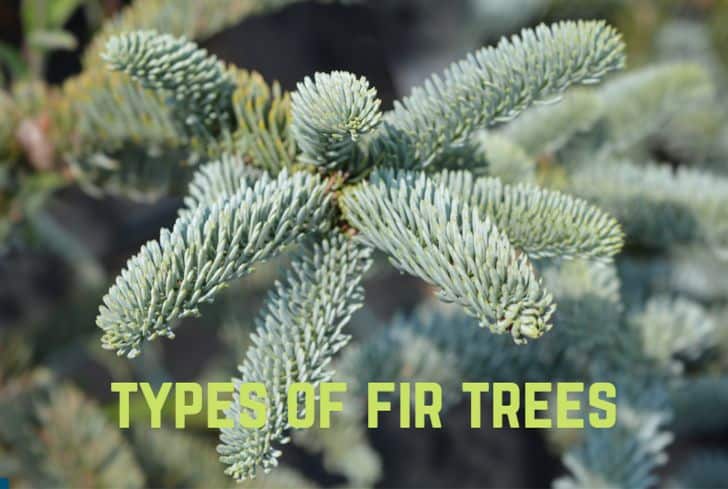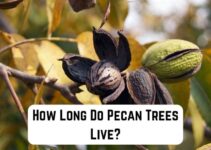With over 50 species of fir trees, it can be a little challenging to make a choice when it comes to the optimal tree type to your plant. Keep reading to find out more about the different types of fir trees.
The magnificent display of colors that trees put on in the autumn is a significant factor in why so many people find them appealing. Due to their changing look, deciduous trees serve as a living calendar that records the passing of the seasons.
Fir trees are evergreen conifers and part of the Pinaceae plant family, which has 48–55 species. It stands apart from other conifer trees thanks to a few traits. This article introduces 13 different types of fir trees.
Read: Types of Locust Trees
13 Amazing Types of Fir Trees
Some of the common types of fir trees include:
1. Balsam Fir
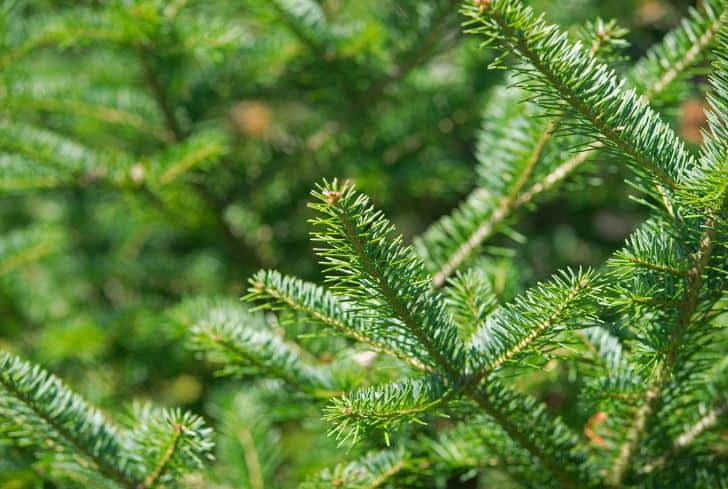
Eastern and central Canada, as well as the northeastern United States, are the natural habitats of this North American fir. It is well-known for its densely pigmented green needles, the natural conical form, and the ability to retain needles even after being chopped. One of the most aromatic types of Christmas trees is this one.
The balsam fir is an evergreen tree that ranges in size from small to medium, with average heights between 40 and 65 feet. The slender, cone-shaped crown of balsam fir trees is covered in tightly packed, dark-green leaves. The flat, needle-like leaves are present. They feature a little stomatal patch towards the tip and are dark green on the outside.
2. Noble Fir
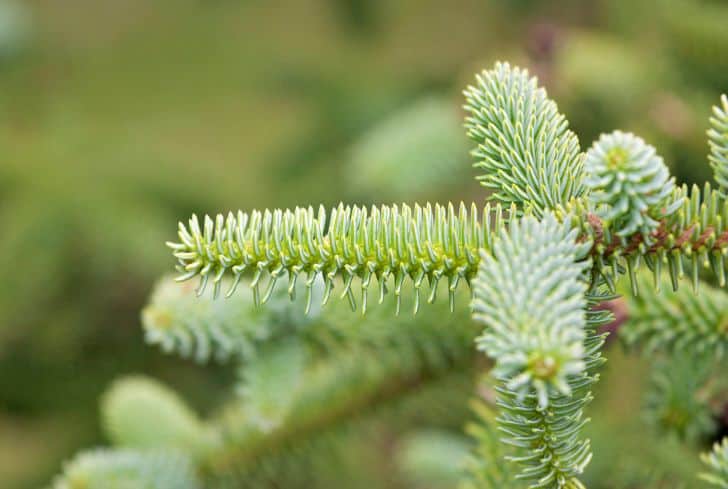
This substantial fir tree is a well-liked kind of fir that deserves the moniker “noble” given to it. Its scientific name, Procera, literally translates to “tall,” and it refers to one of the tallest varieties of fir trees. Some of the most well-liked Christmas trees come in these evergreens’ dwarf variants.
Noble fir trees thrive in coniferous woods where they get full sun and moderate shade. Their bluish-green, needle-like leaves ranging from 0.4 to 1.37 inches (1 to 3.5 cm). The needles are organized in a spiral on the shoots, as seen in close-up photos of the species.
3. California Red Fir
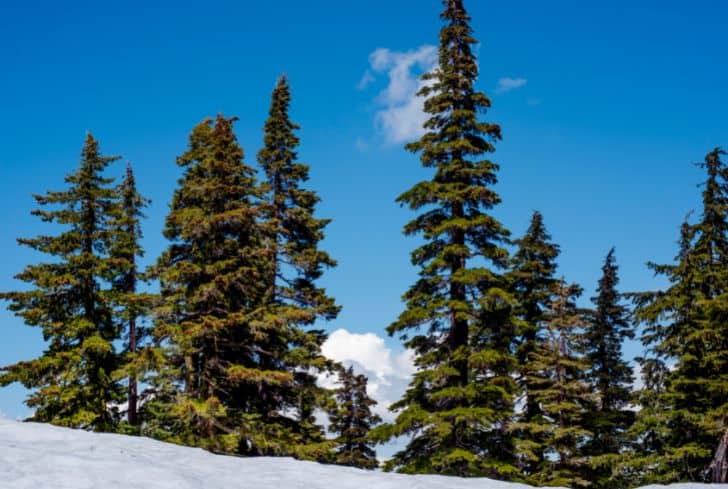
The Western United States is home to the California red fir species. It naturally grows at high altitudes and gets its name from the mature trees’ scarlet bark. Northern California and the mountains of Oregon are where it is most common. These trees have a long, narrow range that runs along the spine of the west coast, and they are most often found on steep hills.
Red fir trees are enormous, growing up to 200 feet tall and 6 feet in diameter. Early botanists were so moved by the trees that they gave them the Latin name abies magnifica, which translates to “magnificent fir.”
4. Fraser Fir
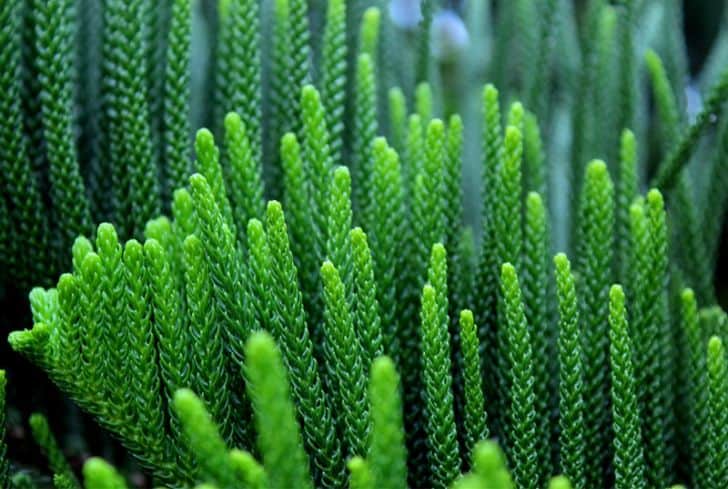
This fir species can only be found in its natural habitat in the Appalachian Mountains, which are located in the southern United States. The Fraser fir and the balsam fir are closely linked to one another. Typically reaching heights of 10 to 15 meters, this tree is an evergreen species.
It has a round trunk and a conical crown with straight branches that grow horizontally or at an upward inclination of forty degrees from the stem. Young trees have a crown growing quite thickly, whereas mature trees will have a more open canopy.
5. Nordmann Fir
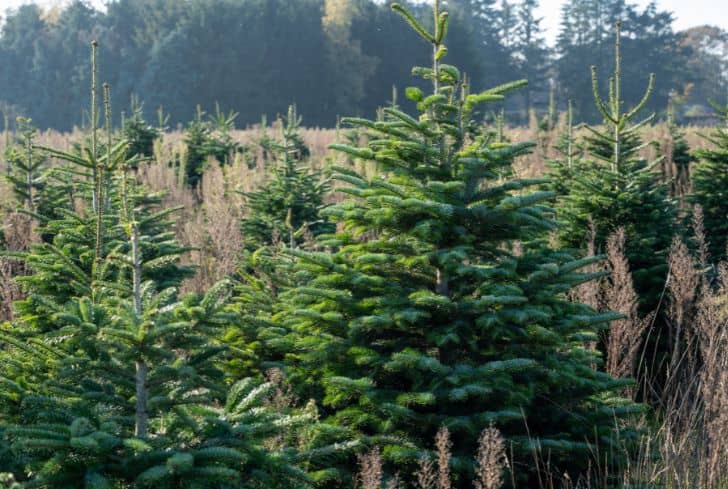
The Nordmann fir is a coniferous tree indigenous to the Caucasus highlands, Europe, and Russia. It is also known as the Caucasian fir tree. In their natural environments, these fir trees stand out as some of the tallest examples of their kind.
One of the most well-liked kinds of Christmas trees is the Nordmann fir tree, which is somewhat comparable to the noble fir. After the tree is chopped down, the delicate needles of the fir tree remain attached to the shoots for a considerable amount of time.
6. Grand Fir
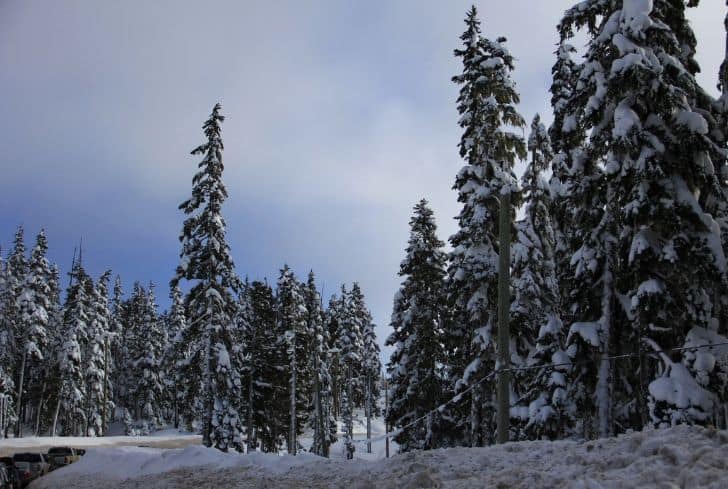
In addition to being one of the tallest kinds of fir trees, the grand fir is one of the species that grow the quickest. As the cones develop into their full state, they become a reddish-brown color.
When crushed, the flat needles, which are two and a half inches long and have a dark green top that is lustrous and has two white lines on the undersides, give off an orange-like aroma.
The bark is flaky and gray. A variety knows this species of trees of local names, including giant silver fir, Oregon fir, lowland white fir, Vancouver fir, western white fir, yellow fir, and great fir. Other regional names are yellow fir and great fir.
7. Silver Fir
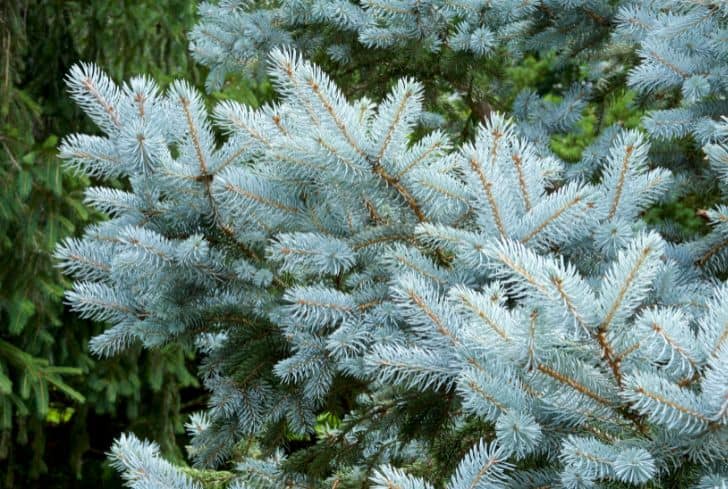
The silver fir tree is a type of conifer that is endemic to Europe. It is a very tall tree with very few leaves. In North America and Europe, European silver firs remain popular choices for Christmas trees.
The foliage of silver firs resembles needles and has a shiny, black look on the surface. The length of the needles is about 1.18 inches (three centimeters), and the tips are notched. Cones are often rather enormous, reaching lengths of up to 7 inches (18.7 cm) and widths of up to 1.6 inches (4 cm).
The unusual triangular form of the juvenile variants of this tree, together with its fresh, mild perfume and needles that remain for a long time, have contributed to its popularity throughout the holiday season.
When a mature Silver Fir reaches its full height, it develops a characteristic pyramidal form at the very crown of the tree. This shape can be seen in many photographs of these trees.
8. Subalpine Fir
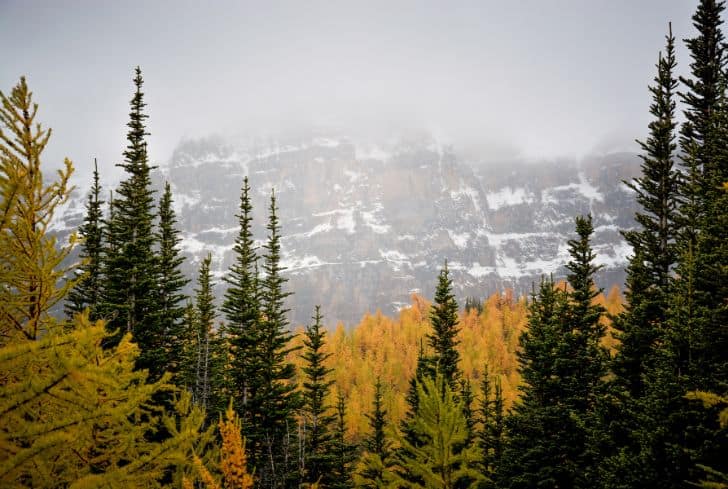
Numerous stands of this kind of fir tree may be found across the Rocky Mountains. Because of this, it is sometimes referred to as the Rockey Mountain fir. It enjoys strong development from New Mexico to the Alaskan border in northern Canada, which may be found in Canada’s extreme north.
One of the most diminutive kinds of fir, the subalpine fir may only grow to a height of sixty feet at full maturity. Its adaptability to vast swathes of the western United States makes it a desirable option for use in parks, lawns, and various other settings.
Other benefits for this plant include: For gardening reasons, it may even be maintained as tiny as a shrub if the branches are clipped the right way.
9. Korean Fir
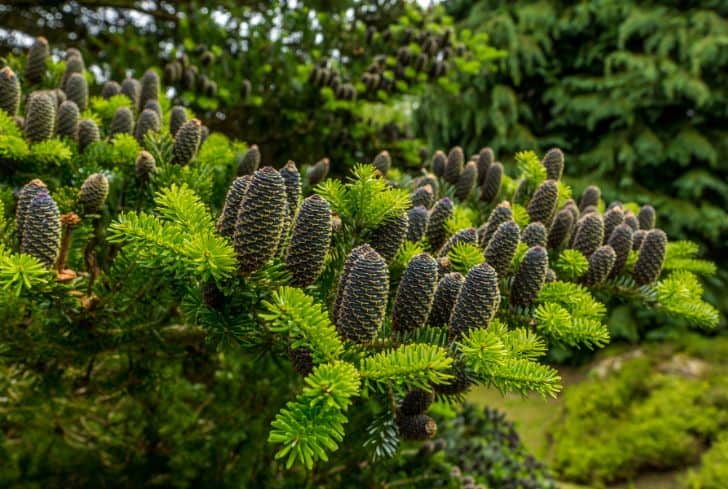
One of the most diminutive species of fir trees is the Korean fir. It has a modest growth rate and is adaptable to various environments. This conifer doesn’t need to be more than 3 feet tall before it begins producing cones.
The recognizable cones, which first emerged in the late spring, might have various colors of blue or purple. The short, wide needles may reach a length of up to 1.5 centimeters and are glossy dark green on the upper surfaces and silvery gray on the under surfaces. Because of its diminutive stature, this species is an excellent choice for a live Christmas tree.
10. Douglas Fir
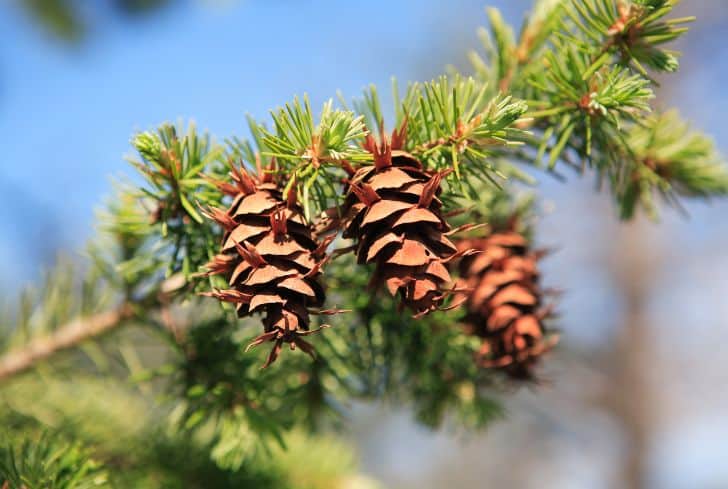
The Douglas or Doug fir is not a natural fir, even though it is one of the most well-known types. This is because the cones dangle downward from the branch and fall off completely. It is exclusive to the woods of western North America, where it is part of the Pseudotsuga genus and grows naturally.
Since they do not fall apart, Douglas fir cones may often be discovered (in great numbers) both in and below the tree. Between each scale on this one-of-a-kind cone is a three-pointed bract, also known as a snake tongue.
In addition, the Doug fir may be recognized by its needles, which, unlike spruce needles, spiral around the branches of the tree but are noticeably more delicate.
11. Spanish Fir
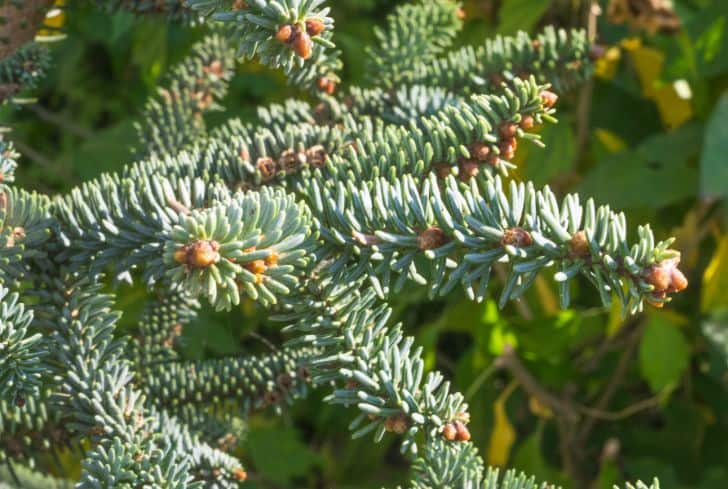
Northern Morocco and Southern Spain are this fir species’ natural habitats. Spanish fir is an evergreen tree that, under ideal circumstances, may reach around 100 feet. The Spanish fir is known for its cone-shaped crown, which develops into an uneven form as the tree grows.
Spanish fir has radially distributed leaves all around the stalk. They have wide, white stomata bands on both sides of the leaf and are a dull blue-green tint.
12. West Himalayan Fir
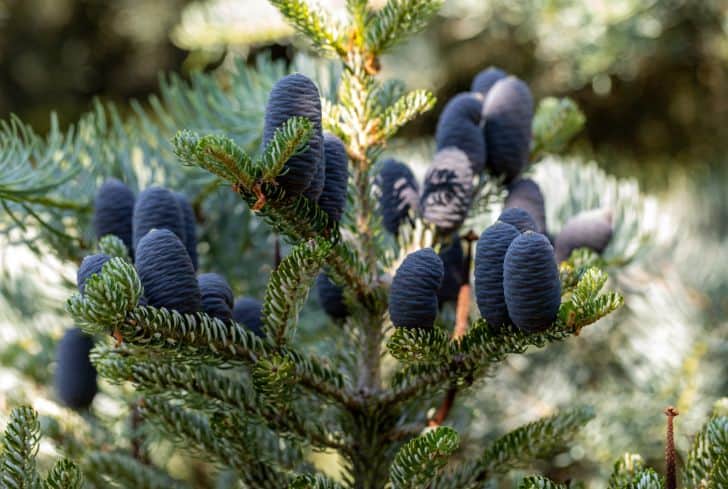
This kind of fir tree often referred to as the pindrow fir, is known for its prodigious size and distinctively long and thin conical form. To thrive, these trees, native to India and Pakistan, need a high humidity level and regular rainfall.
The needle-like leaves of West Himalayan firs are the longest of any fir tree. The needles may reach up to 3.5 inches (9 cm) in length and have a shiny appearance. Two white stomatal bands may be seen on the underside of the needles, which contribute to the lighter look of the leaves.
13. Siberian Fir
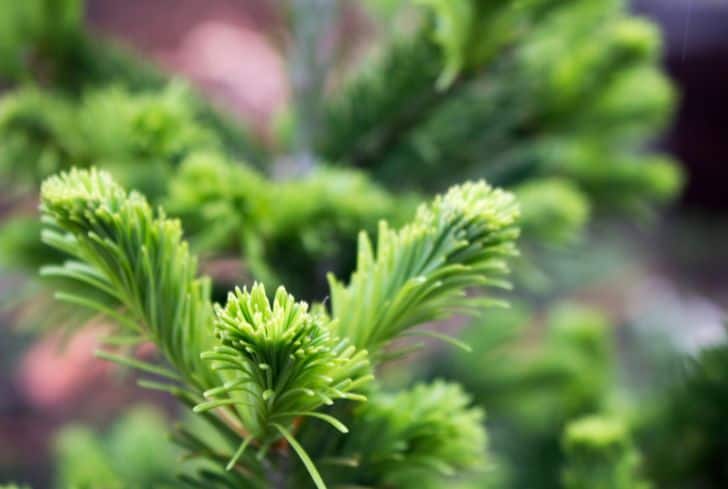
Because of the vast number of fir trees native to the Russian taiga, the region of Siberia is home to some of the most densely forested areas in the globe. The needles of the Siberian fir are famous for their pungent fragrance, and the tree itself is valued for its softwood and resilience.
These trees can withstand the harsh conditions of the Russian winter and live in temperatures far below freezing. Because of its ability to thrive in shady conditions and colder temperatures, this plant is an excellent choice for environments found farther north.
